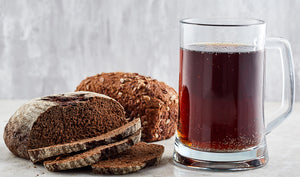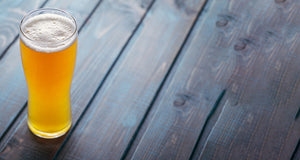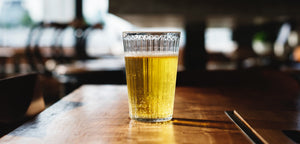When you think about coffee in beer, the first thing that usually comes to mind is a coffee stout or coffee porter. Dark beer and dark coffee seems to be the most common combination. However, coffee in beer is not restricted to dark, malty beers. Recently brewers have been experimenting with adding coffee to IPAs, cream ales, and even Kolsch.
Adding coffee to your beer may sound easy - just put some in the secondary or when you bottle. However, like malts and hops, coffee beans vary drastically by how they are roasted, ground and brewed.
Not All Coffee Is Created Equal
Roasted coffee is usually categorized as light or dark roast. Some may be single origin, others may be from several origins. Where the beans come from and how they are roasted is the first consideration for adding coffee to your brew.
Single Origin
These beans originate from the same geographical region, and sometimes even from the same farm. Each origin is generally associated with a particular taste profile.
Light Roast
Light roasted coffee beans retain much of the origin flavours and generally have a multilayered taste profile. Because these beans are roasted for a shorter time than dark roast they generally have a lighter taste.
Dark Roast
Dark roasted coffee beans tend to take on deeper flavours from the roasting process, having their origin flavours mostly removed. Dark roasted coffees are richer and full bodied and are oilier than light roasted. These coffees are generally described as having a "chocolate" or "bittersweet" taste.
Beans or Brewed?
Once you've determined which flavour profile (light, dark or single origin) you'd like to add to your beer, the next step is deciding which form of coffee you'll use during the brewing process. There are several options, each of which have advantages and disadvantages when it comes to adding coffee to your beer.
Whole Beans
Using whole beans allows you to control the extraction rate. Ground or brewed coffee will impart its flavour in your beer fairly quickly (within minutes), but whole beans allow for a slower process (12 - 24 hours). Whole beans also have the advantage of floating in your fermenter, unlike grounds that will fall to the bottom. This makes it easier for you to rack your beer without them getting stuck in the process. Some brewers will soak whole beans in hot water or alcohol to begin the extraction process (much like you would with vanilla beans), but it's not necessary.
Ground Beans
Ground beans are best used when they are coarsely ground, about the same grind you would use for a French press. Ground coffee doesn't take very long to impart its flavours and aroma in your brew - they can be added for as little as 10 minutes, or up to 2 days depending on when you're adding them.
Cold Brew
Cold brew is one of the preferred methods of adding coffee to beer. Making cold brew requires some preparation (12 - 24 hours is the minimum time to prepare cold brew). One disadvantage to using cold brew, aside from the preparation required, is unlike whole or ground beans, cold brew coffee will add to the volume of your beer (approx. 16 oz per 5 gallon batch).
Extract
Coffee extract is a relatively easy way to add coffee flavour and aroma to your beer. These extracts are usually made from water, coffee and alcohol. While coffee traditionalists will stay away from extracts, if you're in a pinch or don't want to deal with beans, grinds or cold brew, a small amount of extract will do the trick.
To Boil Or Not To Boil?
Once you've chosen the type and form of coffee to add to your brew, the next thing to consider is when to add coffee to your brew. You can add coffee during any point in the brewing process, from the boil to kegging, but knowing how the coffee reacts in each step will help you determine what is best for your style of beer.
Boil
It is not recommended that you add coffee in any form during the boil. Boiling temperature is bad for coffee beans and will result in a bitter and acidic taste. If you want to add your coffee to the boil, it's best to add whole or coarsely ground beans in a hop bag at flame out.
Primary or Secondary
Adding coffee to your primary or secondary will provide a much more robust coffee flavour and aroma than adding it to the boil. The best form of coffee for this method is adding coffee grinds. This will help mimic a cold brew process. When using this method, be careful to make sure you don't rack the grinds out of the carboy (use a filter at the end of your racking tube, or put the grinds in a cheesecloth).
Bottling/Kegging
The most popular way of adding coffee to beers is during bottling or kegging - this gives you the most pronounced and freshest coffee flavours and aroma. Use cold brew, French press or regular brewed coffee for this method and your brew will lock in those wonderful coffee flavours and aroma as it conditions and ages.
Try These Brews With Coffee
Feeling extra experimental? Give it a go with a hoppy brew!



